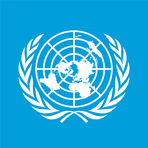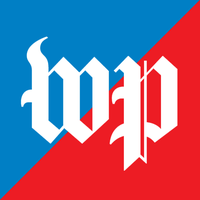Chaos at Shahid Rajaee Port: A Tragic Explosion Unfolds
April 28, 2025, 4:19 am

Location: United States, New York
Employees: 10001+
Founded date: 2002
Total raised: $500M

Location: United States, District of Columbia, Washington
Employees: 1001-5000
Founded date: 1877
A thunderous explosion rocked Iran's Shahid Rajaee Port on April 26, 2025. The blast claimed at least 40 lives and injured over 1,000 people. This tragedy unfolded in a critical area near the Strait of Hormuz, a vital artery for global oil trade. The aftermath of the explosion has left the nation in mourning and raised questions about safety protocols in one of its busiest ports.
The scene was chaotic. Thick black smoke billowed into the sky, a dark cloud of despair hanging over the port. Firefighters battled flames that raged for hours, a fierce reminder of the disaster that had just unfolded. Eyewitnesses described the explosion as a deafening roar, felt miles away. The ground shook, containers toppled, and lives were forever altered.
Iran's supreme leader, Ayatollah Ali Khamenei, swiftly ordered an investigation. His directive came as President Masoud Pezeshkian visited the site, where the devastation was palpable. Emergency responders worked tirelessly, their efforts a race against time. The Red Crescent reported that some victims were airlifted to Tehran for urgent medical care.
The explosion's origin remains shrouded in uncertainty. Initial reports suggested that sodium perchlorate, a chemical used in missile fuel, was involved. However, Iranian officials denied any military cargo was present. The customs office hinted at a fire in a hazardous materials storage area. This ambiguity raises eyebrows, especially given the backdrop of regional tensions and past cyberattacks targeting Iranian infrastructure.
As the flames flickered, the world watched. Nations expressed condolences, including the United Arab Emirates and Saudi Arabia. Even Hezbollah, a staunch ally of Iran, offered support. A day of national mourning was declared, a somber acknowledgment of the lives lost. The streets of Hormozgan province fell silent, a stark contrast to the usual hustle and bustle of port activity.
The port itself is a critical hub. It handles a significant portion of Iran's trade, making it a strategic asset. The explosion's timing is particularly troubling. It coincided with high-stakes nuclear talks between Iran and the United States in Oman. Both sides reported progress, but this tragedy casts a long shadow over diplomatic efforts.
Authorities have sealed off the area, limiting access to the disaster zone. Images from the scene depict a grim reality. Firefighters sift through debris, searching for survivors and recovering bodies. Helicopters hover above, dousing the flames with water, a futile attempt to tame the inferno. The situation, while stabilizing, remains precarious.
The Iranian government faces scrutiny. Questions arise about safety regulations and emergency preparedness. How could such a catastrophic event occur in a major port? The investigation will likely delve into these issues, seeking answers amid the chaos.
As the dust settles, the human toll becomes clearer. Families mourn their loved ones, lives cut short in an instant. The emotional scars will linger long after the physical damage is repaired. The community grapples with loss, their grief palpable.
In the broader context, this explosion serves as a reminder of the fragility of peace in the region. Iran's history is marked by conflict and tension, both internal and external. The port blast is a stark illustration of the risks inherent in a volatile geopolitical landscape.
As the investigation unfolds, the world will be watching. Will this tragedy lead to meaningful change in safety protocols? Or will it be another chapter in a long history of neglect? The answers remain elusive, but the stakes are high.
In the coming days, more details will emerge. The Iranian government must navigate the delicate balance between transparency and security. The public demands answers, and the international community is keenly interested.
For now, the port stands as a somber reminder of the fragility of life. The explosion has left an indelible mark on Iran, a nation already grappling with numerous challenges. As the flames die down, the echoes of this tragedy will resonate for years to come.
In the heart of Shahid Rajaee Port, the aftermath of the explosion serves as a stark metaphor for the turmoil within Iran. Just as the smoke rises, so too do the questions about safety, accountability, and the future. The port, once a bustling hub of commerce, now stands as a testament to the unpredictability of life and the need for vigilance in the face of danger.
As the nation mourns, the world holds its breath. The story of Shahid Rajaee Port is far from over. The investigation will unfold, and the implications will ripple through the region. In the end, the hope is for healing and a renewed commitment to safety. The lives lost deserve nothing less.
The scene was chaotic. Thick black smoke billowed into the sky, a dark cloud of despair hanging over the port. Firefighters battled flames that raged for hours, a fierce reminder of the disaster that had just unfolded. Eyewitnesses described the explosion as a deafening roar, felt miles away. The ground shook, containers toppled, and lives were forever altered.
Iran's supreme leader, Ayatollah Ali Khamenei, swiftly ordered an investigation. His directive came as President Masoud Pezeshkian visited the site, where the devastation was palpable. Emergency responders worked tirelessly, their efforts a race against time. The Red Crescent reported that some victims were airlifted to Tehran for urgent medical care.
The explosion's origin remains shrouded in uncertainty. Initial reports suggested that sodium perchlorate, a chemical used in missile fuel, was involved. However, Iranian officials denied any military cargo was present. The customs office hinted at a fire in a hazardous materials storage area. This ambiguity raises eyebrows, especially given the backdrop of regional tensions and past cyberattacks targeting Iranian infrastructure.
As the flames flickered, the world watched. Nations expressed condolences, including the United Arab Emirates and Saudi Arabia. Even Hezbollah, a staunch ally of Iran, offered support. A day of national mourning was declared, a somber acknowledgment of the lives lost. The streets of Hormozgan province fell silent, a stark contrast to the usual hustle and bustle of port activity.
The port itself is a critical hub. It handles a significant portion of Iran's trade, making it a strategic asset. The explosion's timing is particularly troubling. It coincided with high-stakes nuclear talks between Iran and the United States in Oman. Both sides reported progress, but this tragedy casts a long shadow over diplomatic efforts.
Authorities have sealed off the area, limiting access to the disaster zone. Images from the scene depict a grim reality. Firefighters sift through debris, searching for survivors and recovering bodies. Helicopters hover above, dousing the flames with water, a futile attempt to tame the inferno. The situation, while stabilizing, remains precarious.
The Iranian government faces scrutiny. Questions arise about safety regulations and emergency preparedness. How could such a catastrophic event occur in a major port? The investigation will likely delve into these issues, seeking answers amid the chaos.
As the dust settles, the human toll becomes clearer. Families mourn their loved ones, lives cut short in an instant. The emotional scars will linger long after the physical damage is repaired. The community grapples with loss, their grief palpable.
In the broader context, this explosion serves as a reminder of the fragility of peace in the region. Iran's history is marked by conflict and tension, both internal and external. The port blast is a stark illustration of the risks inherent in a volatile geopolitical landscape.
As the investigation unfolds, the world will be watching. Will this tragedy lead to meaningful change in safety protocols? Or will it be another chapter in a long history of neglect? The answers remain elusive, but the stakes are high.
In the coming days, more details will emerge. The Iranian government must navigate the delicate balance between transparency and security. The public demands answers, and the international community is keenly interested.
For now, the port stands as a somber reminder of the fragility of life. The explosion has left an indelible mark on Iran, a nation already grappling with numerous challenges. As the flames die down, the echoes of this tragedy will resonate for years to come.
In the heart of Shahid Rajaee Port, the aftermath of the explosion serves as a stark metaphor for the turmoil within Iran. Just as the smoke rises, so too do the questions about safety, accountability, and the future. The port, once a bustling hub of commerce, now stands as a testament to the unpredictability of life and the need for vigilance in the face of danger.
As the nation mourns, the world holds its breath. The story of Shahid Rajaee Port is far from over. The investigation will unfold, and the implications will ripple through the region. In the end, the hope is for healing and a renewed commitment to safety. The lives lost deserve nothing less.